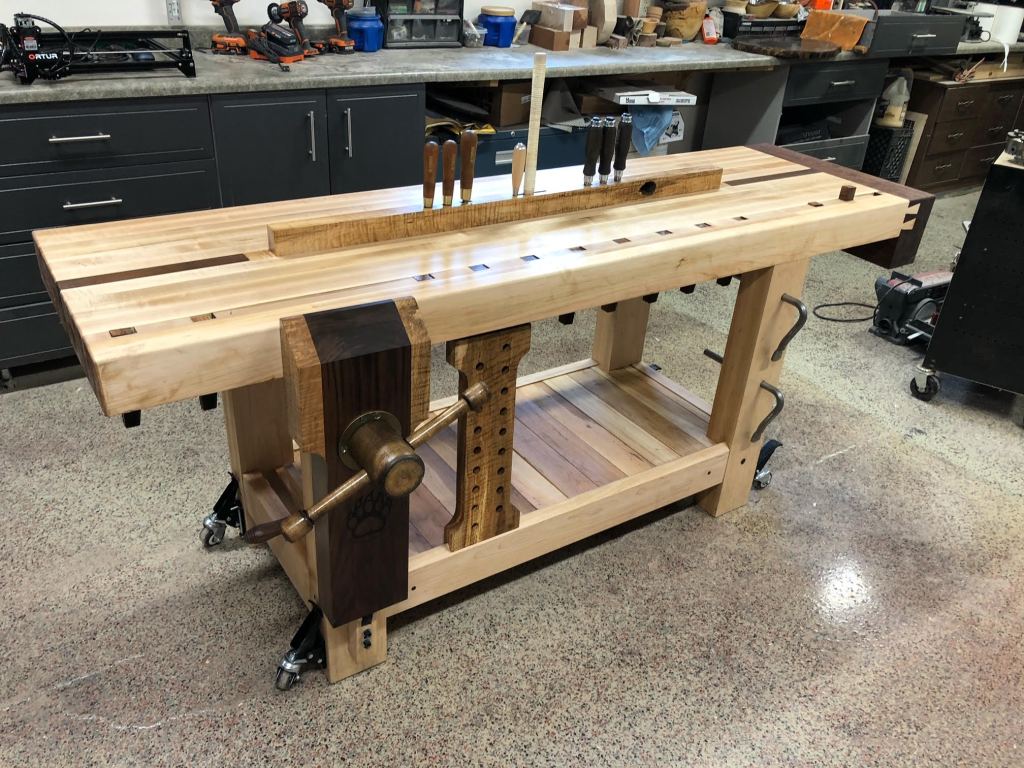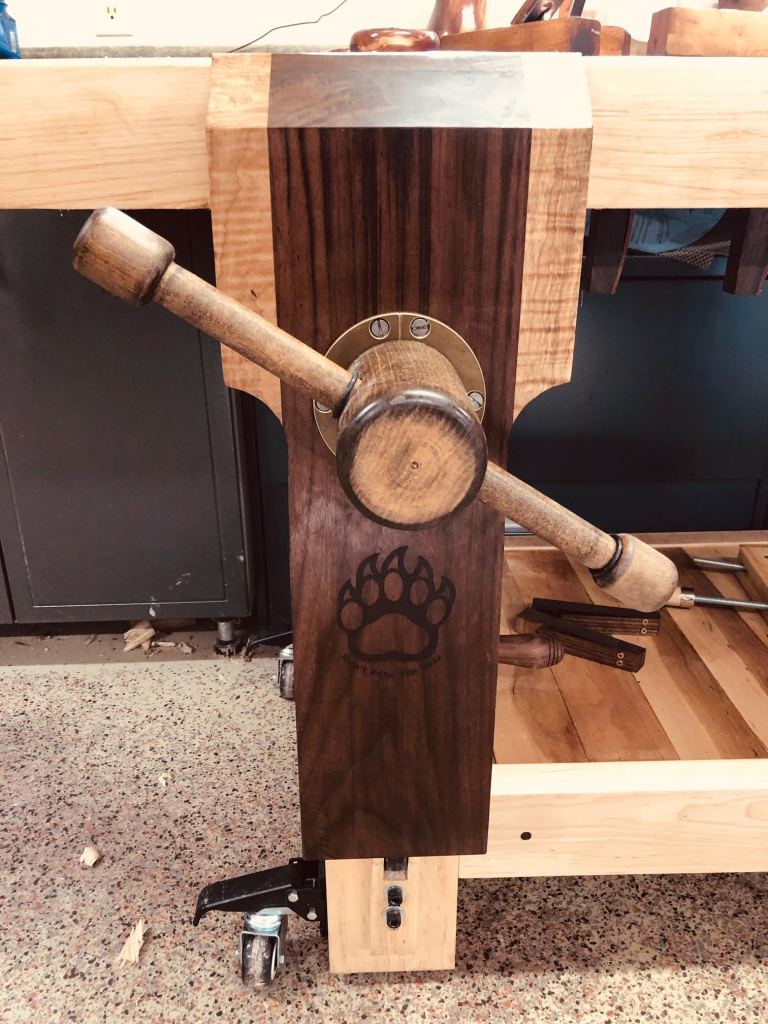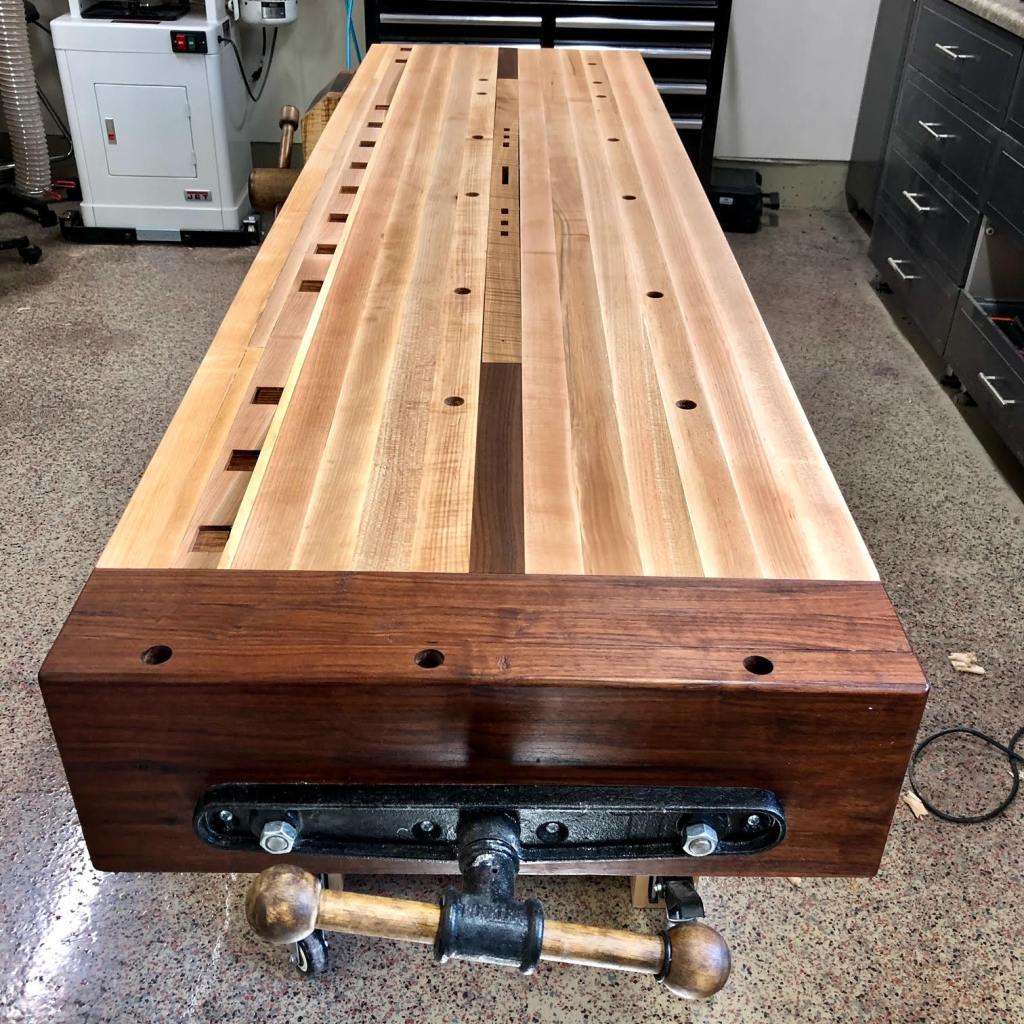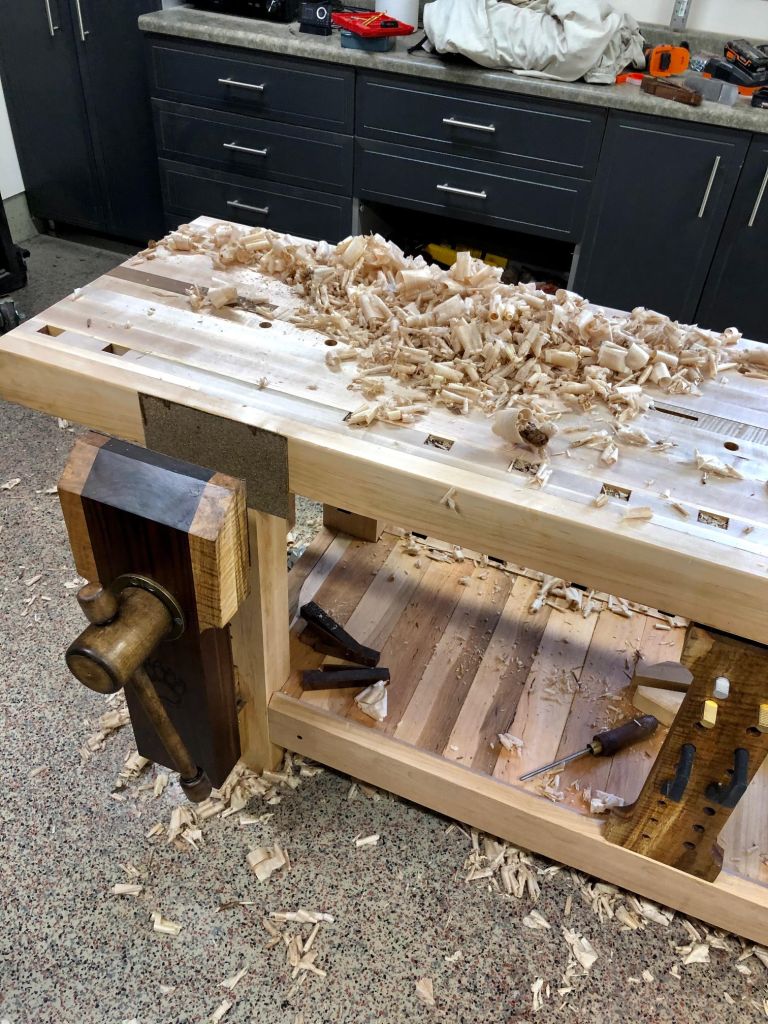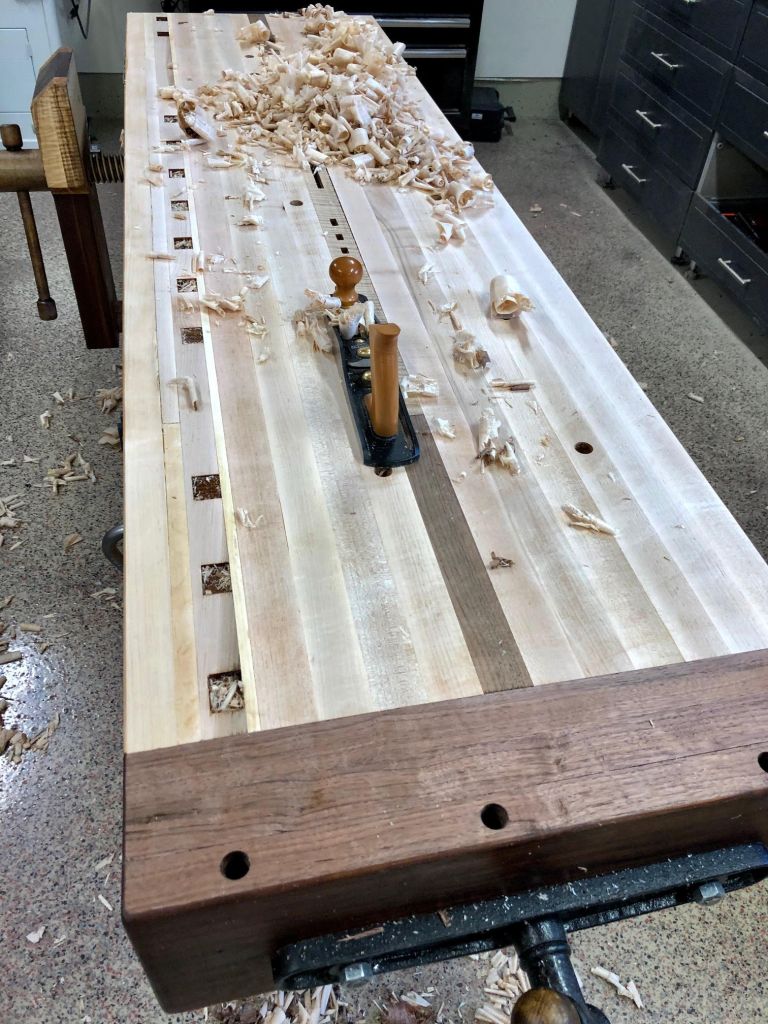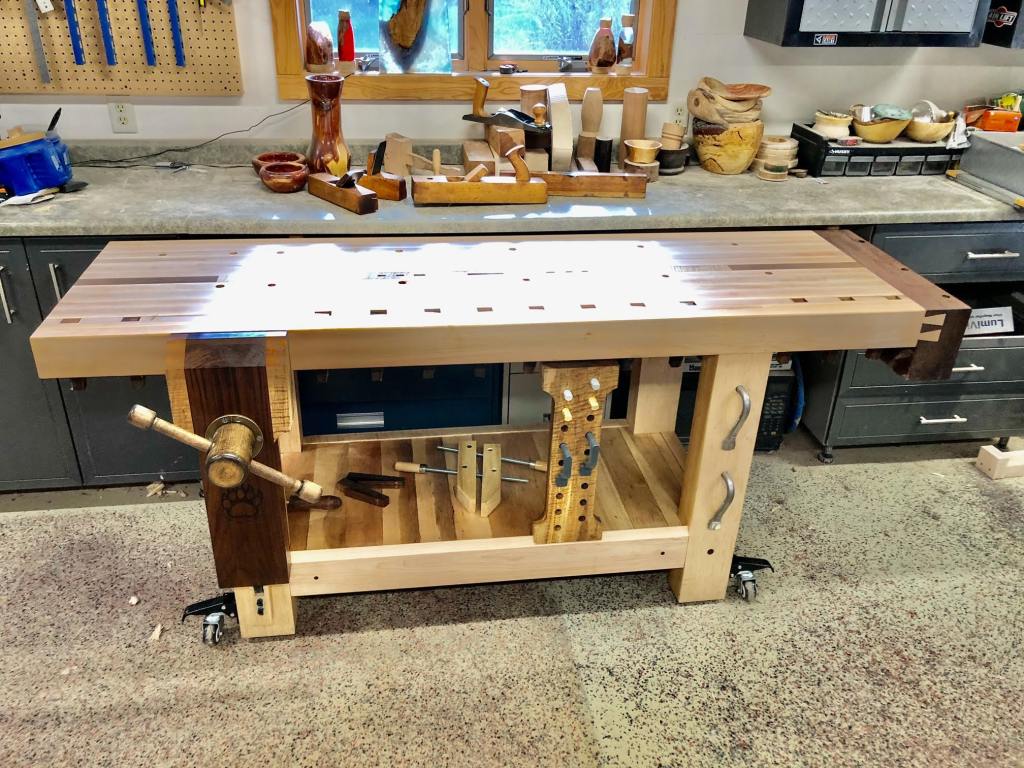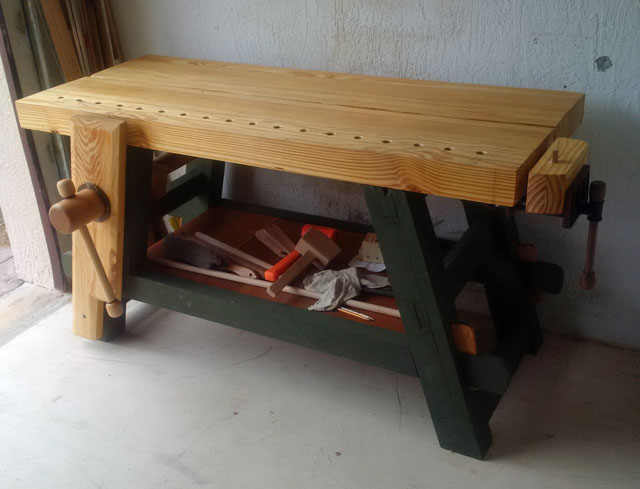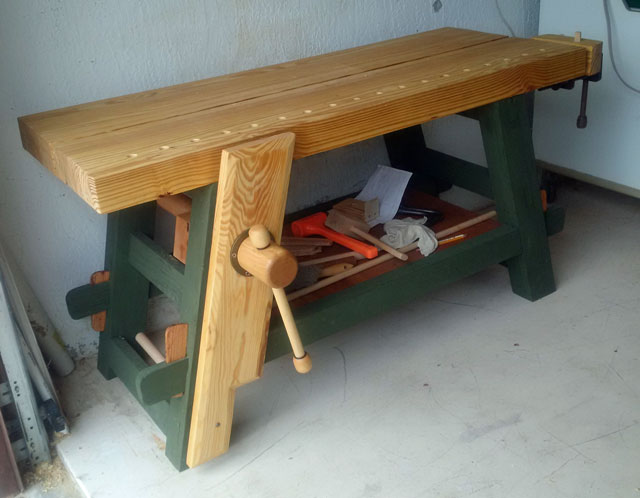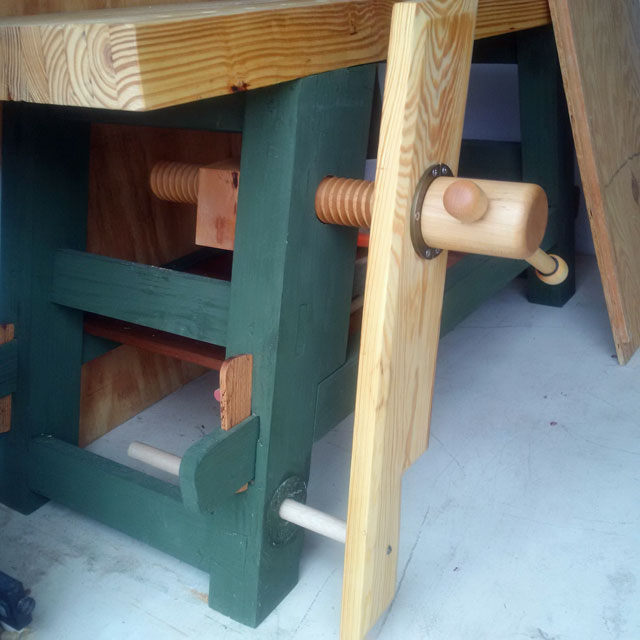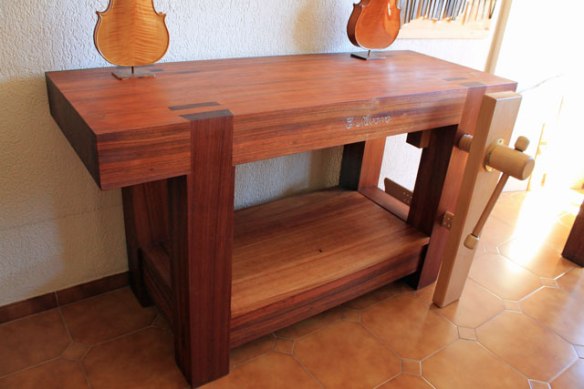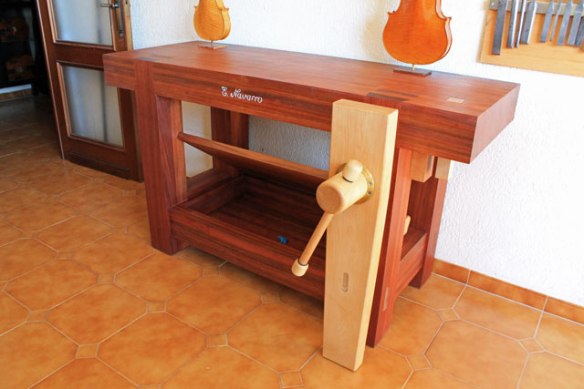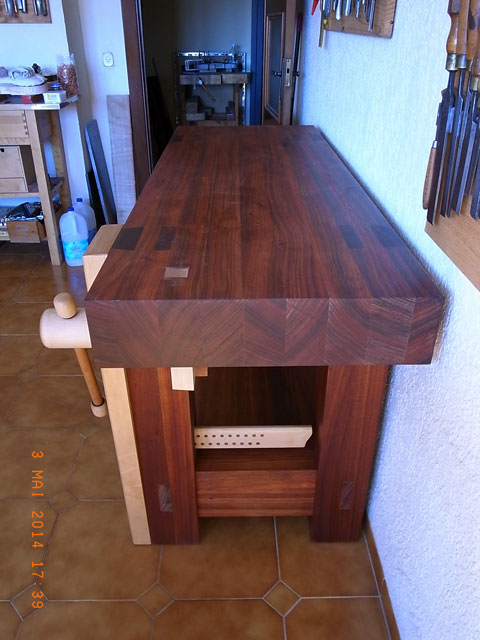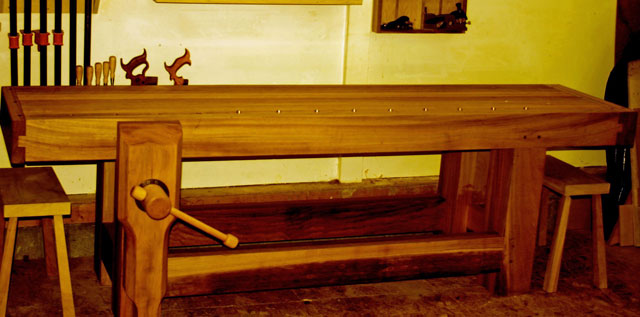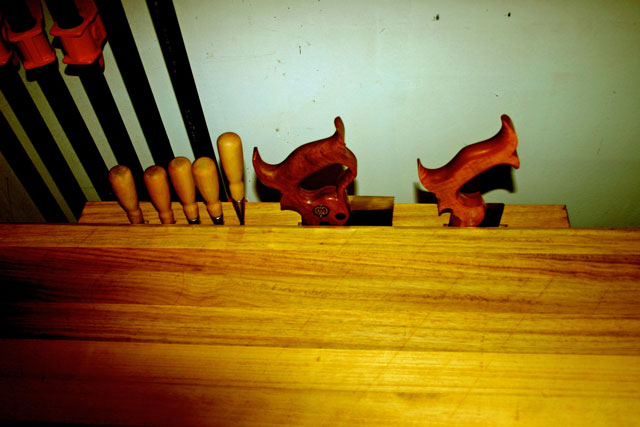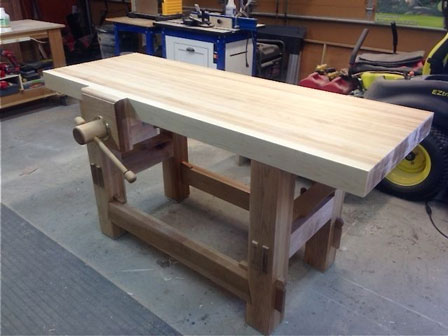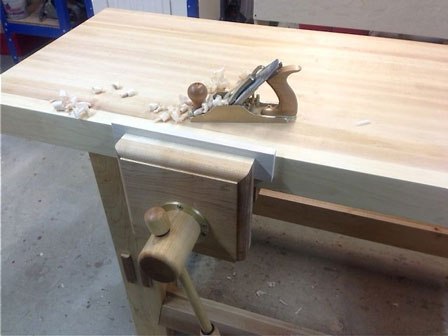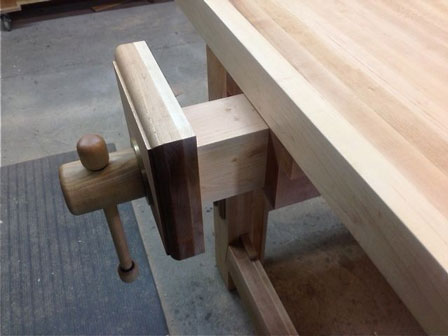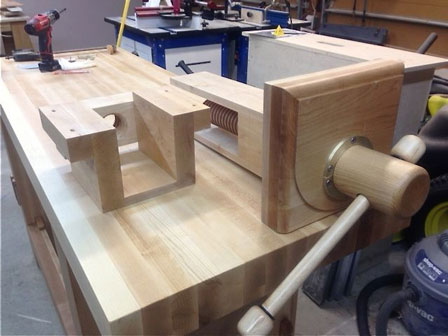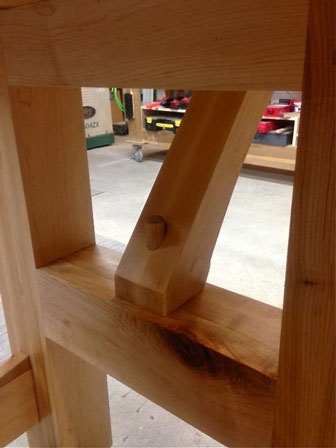Adding our July 2013 Workbench of the Month from Brian M. of Ottawa, Canada to our Lake Erie Toolworks Blog for ease of access and historical awareness.

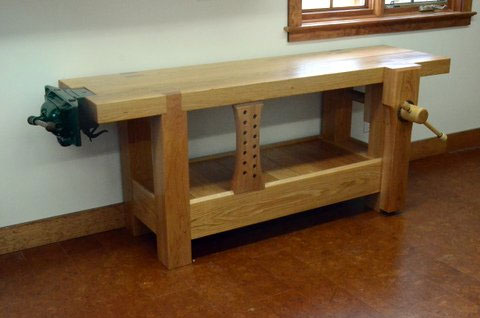

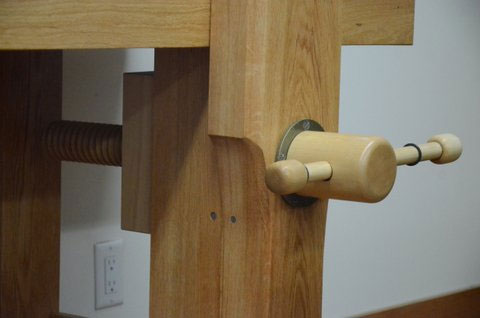
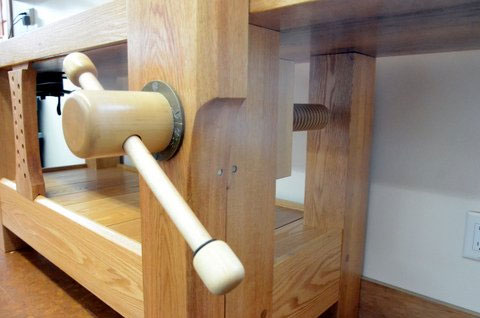
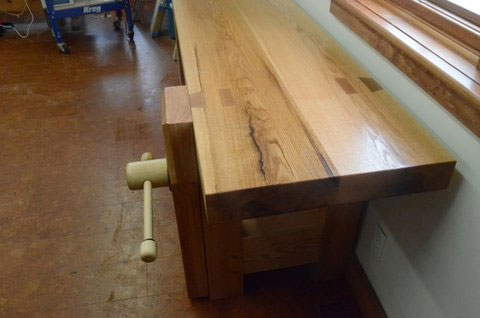
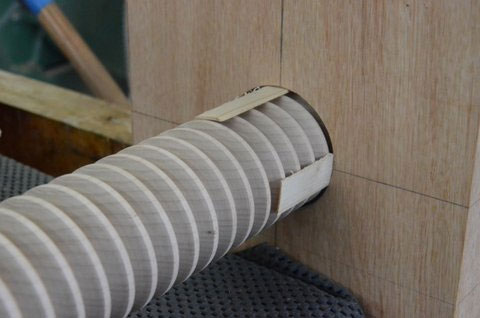
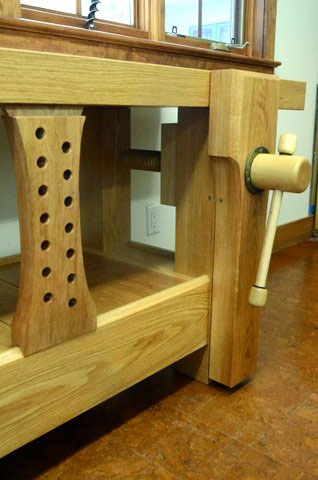
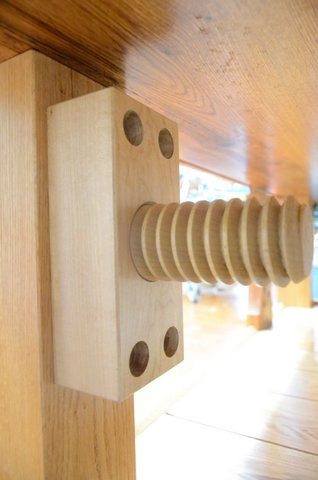
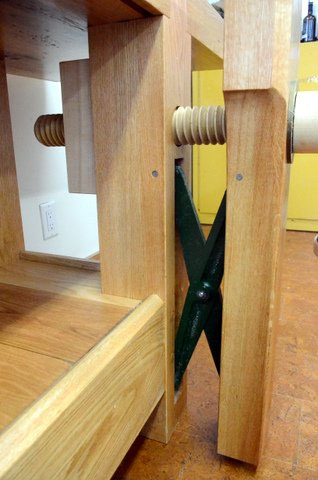
Nick,
I finally finished my Roubo style workbench and I have attached some pictures.
The vise installed beautifully. Rather than use tape to align the screw in the hole I used pine splints. The hole size was 2-5/8″ so the splints were 1/16″ thick. They held the screw quite firmly, yet the pine was soft enough not to damage anything. I have shown the splints partially inserted in the chop. I used the same technique for the leg. Their length is smaller than the depth of the leg, to allow the screw to fully tighten the assembly. The block was bolted to the leg, no glue. To me the splints gave an absolutely positive affirmation that the screw was perfectly aligned in the hole.
With the exception of the leg vise the bench is entirely red oak. The bench top is 2 pieces of 3-1/2″ red about seven feet long weighing around 170 lbs. (Jointing 7 feet of 3-1/2″ thick oak is no treat, especially since the joint integrity was done by placing one on top of the other, not sideways. Lots of heavy lifting!). The top is 22″ wide. Bench height is 33″. The legs are 5″ x 5-1/4″. The risers are 3-1/2″ deep by 7″ tall. The tenons are 6-1/2″ high x 1-3/4″ wide x 3″ long.
The tenons were secured with quarter sawn red oak dowels made on a dowel making machine that is about 120 years old ( original use was for barn building). No glue was used
You will note the Lake Erie Toolworks screw vise is in good company with an Emmert vise and a Benchcrafted Criss Cross.
Total bench weight is around 440 lbs. (350 without the Emmert vise).
I am thinking of adding a second shelf for hand planes. I am also going to leather line both vises.
Thanks Nick for an absolutely great product.
Brian M.
Ottawa Canada

